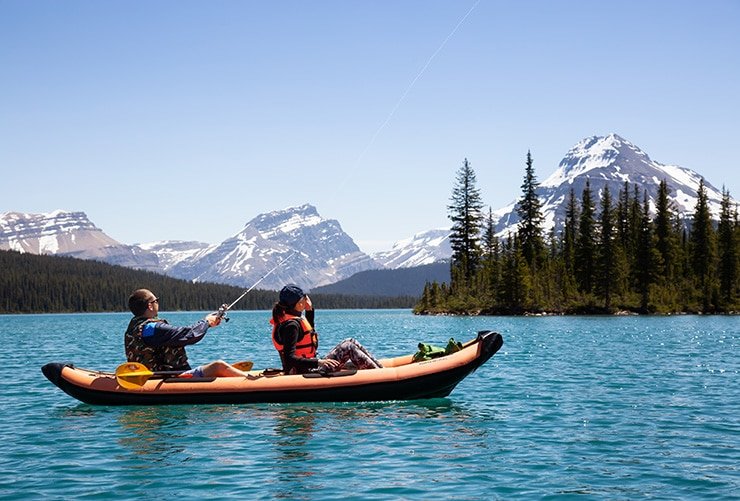When looking to get into a new activity, it’s normal to wonder about the risks, especially a water activity. The idea of getting into kayaking can be a little scary for a newbie. The sport may be popular but many people still don’t know much about it.
Is kayaking dangerous? No, kayaking isn’t particularly dangerous, in general. But since kayaking is a watersport, it can be, and kayaking accidents do happen. However, many of them can be avoided so you shouldn’t be scared.
Let’s get into the details.
Key Takeaways
- Kayaking is not particularly dangerous, but it has some risks that you can avoid by taking a few precautions.
- Some of the common kayaking risks include drowning, cold shock, sun exposure, wildlife attacks, boat collisions, and weather changes.
- To prevent kayaking accidents, kayakers should wear a life jacket, check the weather forecast, research the area, dress appropriately, and respect the water and wildlife.
- Kayaking can be a fun and rewarding activity for beginners and experienced paddlers alike, as long as they follow proper safety protocols.
What Are the Risks of Kayaking?
There are two kinds of kayaking risks: perceived and real. Perceived risk is what you assume, and it may not be real.
For instance, kayaking at a small calm lake isn’t as dangerous as you may think.
Real risks are the actual potential dangers of kayaking. Take a look at some of the most common ones.
The Most Common Kayaking Hazards and How to Avoid Them
Collision with Other Water Vessels

There are times when you have to share the water with other people. This may mean dealing with motorized watercraft.
Kayaks are small and quiet–not easy to spot especially in the open sea. Ships, ferries, jet skis, and other motorized vessels can cause two problems for kayakers.
The first one is that large boats will create large waves when they zoom past you and your kayak may flip as a result. This won’t be a pleasant situation if you aren’t a strong swimmer or you can’t right your kayak. Even if you’re experienced, there’s still the risk of hitting something when you fall.
The other problem is that a motorized vessel can run into your kayak. As you can imagine, such an accident won’t end well.
To enjoy a safe kayaking trip in a place with a lot of boat traffic, you need to be visible. Wear bright clothes so other water users can spot you easily. When kayaking during the night or in poor visibility attach kayak lights to your vessel.
I’d also recommend avoiding motorized vessels and staying out of their way. You can easily spot them but they can’t easily spot you. And if they do, it may be too late for them to turn fast enough.
Dehydration and Fatigue
When you hear kayaking risks, dehydration and fatigue are probably not the first things that come to mind. This is what makes them even more dangerous.
Kayaking is a blissful activity and it’s easy to get lost in the peace and beauty of your surroundings. As you paddle you may not even realize that you’re getting tired until it’s too late. Paddling a kayak is a gentle exercise but it’s more physically demanding than you may think.
When you’re exhausted, it becomes harder to think straight, you may not be able to react fast enough when you need to, and you’re more likely to make serious mistakes. Things can go south quickly especially if you’re out in the open ocean or a fast-flowing river.
The same goes for dehydration. Paddling under the sun will drain you faster than you think, making you dehydrated. With dehydration comes lightheadedness or dizziness and feeling tired.
How do you avoid dehydration and fatigue while kayaking?
First, don’t go kayaking if you’re already feeling tired. Also, be careful not to spend all your energy paddling out. Remember you still need to paddle back and you don’t want to be too tired.
Another key kayak safety rule is to always carry more than enough drinking water with you. More importantly, remember to drink it.
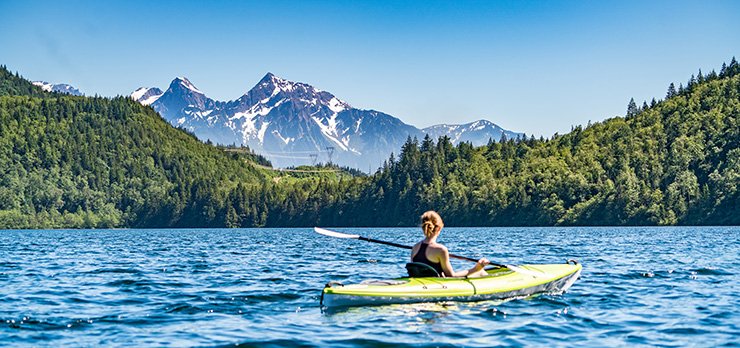
Encounter with Dangerous Wildlife
Anytime you go exploring in nature, there’s a chance that you’ll come across wildlife. And kayaking is no different. The beautiful marine animals are all part of the kayaking adventure but some of them can be dangerous.
This kayaking risk depends on where you’ll be paddling. Some waterways don’t have any wildlife that may pose danger to humans.
If you’re going out into the open ocean you may encounter more serious wildlife like sharks. You could also encounter snakes, alligators, and other dangerous animals while kayaking in rivers and lakes.
There have been cases of alligators and sharks attacking paddlers–although they’re rare. But it’s still important to be aware of the danger and take the necessary precautions.
If there have been shark sightings it’s wise not to wander far out in your kayak. Always research the wildlife in the area you’ll be paddling. Talk to locals and other kayakers so you know what to expect.
Respect animals in their natural habitat and don’t try to touch them as that can be an extremely dangerous move.
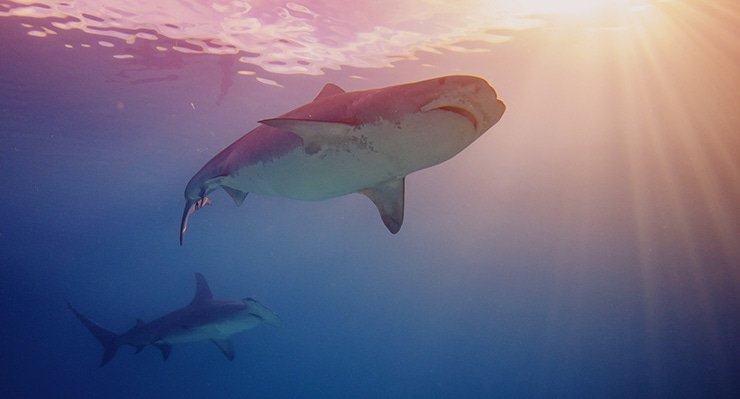
Sun Damage
Many people don’t consider sun exposure a real danger when kayaking–but it is.
A little sun exposure is good for you. But too much of it comes with a whole lot of problems. Prolonged exposure to the sun can lead to sunburn, heat stroke, heat exhaustion, and dehydration in the short term.
In the long term, prolonged sun exposure can lead to skin cancer, early aging, and eye problems, among other issues.
You need to protect yourself from the sun when kayaking, especially during summer. First, use sunscreen and keep reapplying throughout the day, more so if you’ll also be swimming. Plan your exposure and avoid going kayaking at midday when the sun is too hot. Go earlier or later in the day.
If it’s too hot, take breaks under a shade and drink lots of water. Wear clothing that covers and protects your skin from the sun too.
Drowning
According to the USCG recreational boating statistics, there were 131 canoe/kayak drownings in 2020. 75% of fatal boating accidents were as a result of drowning. That’s serious if you think about it.
The risk of drowning will always be there when it comes to activities that are done in water. But there are things you can do to make that risk significantly lower.
The first one is to wear a USCG-approved life jacket at all times when kayaking. Many kayakers have the right PFD for kayaking, they know how to wear it, but they keep it in the cockpit instead of wearing it.
Your personal flotation device won’t be of much use when you fall into the water unless you wear it. This goes for beginners as well as experienced kayakers. I always say that it’s better to wear your PFD and not need it than to need it and not have it on.
Make sure the life jacket fits well too. It should be snug and appropriate for your weight.
The other thing you can do is be sure not to overestimate your swimming ability. If you can’t swim, avoid paddling in deep water. Stick to shallow water, close to the shore, and there should be people close by.
Kayak Flipping
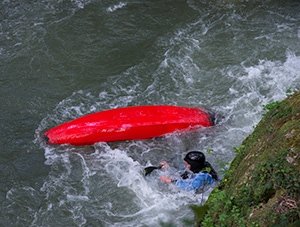
Whether or not this is a risk depends on the water temperature, where you’re paddling, the kind of kayak you’re using, and your skill level.
If you’re paddling in calm waters close to the shore with other people around, then you have nothing to worry about if the kayak capsizes. This is assuming that the water is warm too.
But if you’re sea kayaking far out in a sea kayak with a spray skirt and you have no idea how to self-rescue, your kayak capsizing might not end well. It’s even worse if you can’t swim or if the water is ice cold.
ALSO READ: Your Guide to Basic Sea Kayaking Safety
A kayak flipping while you’re paddling a fast-moving river might also be dangerous.
To reduce the risks of getting hurt when your kayak capsizes, learn how to swim. Non-swimmers can still kayak but knowing how to swim could save you a lot of trouble. Secondly, always wear your PFD whether you’re lake kayaking, river kayaking, sea kayaking, or kayaking pretty much anywhere.
Before you start going out into the open water, large lake, or fast-moving river, take time to learn self-rescue skills. You should know what to do when your kayak flips, whether it’s a sit-in or sit-on-top. Learn how to right the kayak, drain water, and get back in.
Extreme Water and Weather Conditions
Kayaking is heavily dependent on the weather and water conditions.
Bad weather and water conditions greatly increase the risk of getting hurt, or worse. For example, if you’re caught in a thunderstorm while kayaking, there’s the possibility of being struck by lightning. It may also mean having to deal with high winds and waves which could easily cause you to capsize.
Extreme kayaking like paddling class IV rapids or more serious rapids also translates to higher risks.
Make sure you check the weather forecast before you go out every single time. Plan your route carefully and have more than one exit point. Sometimes the weather may change suddenly so you need to prepare for that as well.
Avoid going out if the weather forecast predicts heavy rain, strong winds, a storm, and even extreme heat.
While kayaking, always be alert and watch out for any weather changes. Kayak to shore immediately if you sense the weather is about to get intense. It’s better to be safe than sorry.
Cold Shock and Hypothermia
Kayaking is one of those water sports that you can do all year round. But paddling in the colder months comes with a few extra risks.
Usually, falling into the water is nothing serious if it’s warm. But falling into cold water can be fatal.
When you fall into cold water, your body produces certain reactions to protect itself. These reactions are known as cold water shock. First, there’s rapid breathing or hyperventilation which may cause you to feel a little dizzy and confused. You’ll also find it harder to hold your breath.
The chances of drowning are high at this point because of the rapid breathing and inability to hold your breath. You could start inhaling water. If you’re wearing a life jacket it can help keep your head out of the water to prevent drowning.
Your muscles begin to cool and, as a result, this will reduce your muscle strength and control.
If you survive cold shock you could become hypothermic.
To prevent cold water shock and hypothermia, dress appropriately when kayaking in cold waters. Layer up well and always prepare for immersion. Wear a properly fitting PFD as well. Life jackets save many lives.
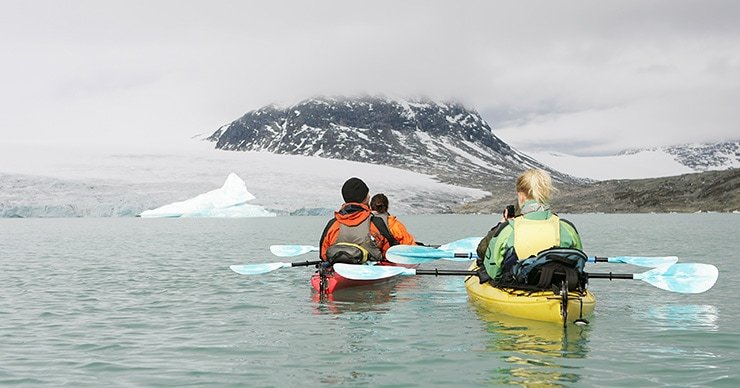
Obstacles in the Water
Obstacles can be a kayaker’s worst nightmare, especially when paddling rivers. This could be a fallen tree or what some refer to as a strainer, rock obstructions, etc. They can be deadly if you get caught up in them. It’s even worse if the obstacle is hidden under the water’s surface so you can’t see it.
The best way to avoid dangerous obstacles is to research your route before going on your kayak adventure. You don’t want any serious obstacle catching you by surprise. Even if you’re familiar with your route, you should still be cautious, more so after a storm.
Getting Lost
This may not be a concern if you kayak at your local small lake or river which you know like the back of your hand. But the story changes when you’re kayaking in the ocean or a large lake.
Kayaking is fun and it’s easy to drift farther than you had planned. By the time you realize, you may not be able to see the shore or any landmark that you recognize. This is as scary as it is dangerous.
To prevent this from happening, avoid wandering too far from the shore. If you’re exploring the ocean, it’s best to go with other kayaking buddies. Also, bring a GPS device and an old-school map. You might need it.
Accidents Due to Inexperience or Paddling Under the Influence
According to the 2020 boating statistics mentioned above, the two leading causes of accidents were operator inexperience and operator inattention. Alcohol use was also one of the top causes of boating accidents.
ALSO READ: Can You Get a DUI on a Kayak?
One of the most important safety rules for water sports is to respect the water and don’t get too familiar.
Take a kayaking course where you’ll learn all the proper paddling techniques and self-rescue skills. Learn how to read the weather and water while out kayaking. Even better, you might meet other kayakers so you’ll have other people to go paddling with.
Never go kayaking while under the influence. You need to be able to think quickly and react appropriately in case of anything.
Frequently Asked Question About the Dangers of Kayaking
Is Kayaking Scary?
No, kayaking is not scary. Of course, a lot of this is subjective – but objectively, kayaking is not a scary activity. If you’re a beginner, you can make it easy and comfortable by kayaking in calm, shallow water.
Do Kayaks Flip Over Easily?
No, kayaks don’t capsize easily. Just make sure you use the proper kayak for the right purpose and water condition. For example, if you’re paddling whitewater, get a whitewater kayak, if you want to go sea kayaking use a proper sea kayak.
Is Kayaking on a Lake Dangerous?
Kayaking on a lake can be dangerous depending on the size of the lake, your skill level, and weather conditions.
Larger lakes can have overpowering currents and waves which could make the experience dangerous.
Is River Kayaking Risky?
This depends on the water flow and river levels. Kayaking on a lazy river isn’t risky but paddling whitewater rapids can be risky.
Is It Dangerous to Kayak in the Ocean?
If you’re kayaking close to the shore and the water is glassy and warm then it’s not dangerous. But the farther from the shore you go, the more dangerous it can be.
When paddling in the ocean, have the appropriate safety gear, wear proper clothing for the water temperature, and don’t overestimate your skill level.
Is Kayaking Safe for Beginners?
Yes, kayaking is safe for beginners. When you’re getting started, stick to calm sheltered water and make sure there are other people around. Even better, get an instructor to teach you the basic skills.
Is Kayaking Dangerous for Non-Swimmers?
Kayaking is a water sport so knowing how to swim is a big plus. If you’re a non-swimmer you can still kayak safely. Wear a USCG-approved life jacket and only go kayaking with an experienced paddler.
How Dangerous Is Extreme Kayaking?
Extreme kayaking can be quite dangerous and it should only be attempted by skilled kayakers. If you’re interested in extreme kayaking I’d recommend finding an instructor who will walk with you. Start slowly and build your skills gradually.
Summary: Is Kayaking Really Dangerous?
READ NEXT: 10 Common Kayaking Injuries and How To Avoid Them
Generally, kayaking is not dangerous. But, as with all physical activities (especially watersports), there is going to be a certain amount of risk involved. However, most of the risks associated with kayaking can be easily avoided by taking precautions.
Some of the common kayaking risks include drowning, cold shock, getting lost, hitting an obstacle, sun damage, and getting attacked by wildlife.
To prevent yourself from getting hurt, make sure you wear a properly fitting PFD. Check the weather forecast and research the area so you can prepare in advance.
You may also like our article about the ins and outs of kayak safety.
Always be honest with yourself about your skill level and don’t try anything you can’t handle. If possible, go with a group of friends, and be sure to take things steady. Kayaking can be as easy or as hard as you want it to be, so if you use common sense and adhere to proper safety protocols – you should be fine.

